Midwestern Gothic staffer Jo Chang talks with poet Gary Lemons about his collection Snake III: The Hunger Sutras, being inspired by dreams, the importance of kinship, and more.
Jo Chang: What’s your connection to the Midwest?
Gary Lemons: I moved to Washington, Iowa—a small town south of Iowa City—from Vermont—to qualify for the less expensive tuition rate for in-state students at the University of Iowa where I’d been accepted into the undergraduate poetry workshop. Prior to that move I’d never been to the Midwest.
Washington was an Amish community and the house I stayed in was in the middle of an Amish enclave if you will. I stumbled on to this the first day by going into a cafe/general store thirsty as well as curious about the horse-drawn wagons out front—something you only see in Vermont during the mid-winter when the maple sap is running. The Amish people were wonderful to me. They knew of any empty house one of their members moved out of and before I knew it they moved me into it. The community cleaned it and aired it out and hauled firewood for the winter and filled the cupboards with canned vegetables and fruits and brought fresh oil for the lanterns and re-installed the gravity feed water system from the elevated cistern to the house. There was no electricity and the hot water came from a pipe run through the box of the wood stove into a holding tank where it was then mixed with cold water to control the temperature. There was a standpipe in the front yard beside a trough for watering horses.
I spent that summer and fall working on Amish farms—haying and planting and weeding and harvesting—cutting wood and caring for horses. I learned so much about patience and tradition and compassion and tenderness but I also learned about discipline and to the degree I was able—character—and what it means to make a vow and keep it. I turned 21 that summer.
So my first exposure to the Midwest was transformational. The long bright buttery sunlight—the smells of horse and fresh cut hay—the sweat running out of your hair into your eyes and the goodness of a people seemingly lost in time all contributed to a sense of finding a sort of beginning—a ground in myself where I could build something for the years to come. I fell in love with Iowa you might say and no one was more surprised than I was to find that a slower more contemplative life could offer more nourishment for a poet than the fast-paced urban existence I knew from growing up in Washington D.C.
JC: You spent two years in the undergraduate poetry workshop at the University of Iowa. Can you speak about your time there, and how the world of academia has affected your writing, which, by contrast, is very focused on nature and the earth?
GL: After my year establishing residency ended I left Washington and moved to Iowa City. It was hard saying goodbye to my community—my first Sangha if you will—but I was completely stoked to jump into the workshop life. I had already audited classes with John Berryman and William Stafford but it was now time to fully enter the crazed and almost caricature existence of a young poet in an extremely exclusive literary incubator.
My first teacher was Donald Justice. I admired his work tremendously and was—as we all were—in awe of him. He seemed to tower over us—blotting out the sun—his proclamations regarding the merit or mostly the lack of it in our writing caused earthquakes in the heart and drove many of us directly into the Iowa City bars to assuage the ensuing angst the comes from having Mr. Justice listen to your poem and then raise both eyebrows and say something like, “No—that is not quite it at all.” Crushed.
But he instilled critically important lessons that are a part of my writing life to this day—discipline to write every day—which built on the time spent with the Amish doing daily chores exactly at the same time in the same way over and over again—reading all poems but especially my work out loud while listening—truly listening—to the way the words touch each other to form subtle meanings—how they evoke subliminal responses not readily available in the words alone or as they lie silent on the page. He also harangued on the importance and privilege of editing—of never being satisfied with what you wrote but knowing it is a surface beneath which more important and more significant understandings are waiting for release through the process of emergence and reemergence in the drafts. He taught us never to stand in the way of the original outpouring but from that point to ceaseless question yourself as you amended it until only what you wanted to say—the reason you wrote the damn thing to begin with—remained. I honor him every day for that.
I also had a semester with Marvin Bell who was a singularly kind and accessible teacher whose main contribution to my life as a poet—and it was a huge one that I appreciate even more as I grow older—was how to talk about a poem—how to reveal those secret urges and flashing insights that are a part of the composition into a language in which the poem can be discussed and shared. A byproduct of this skill is the ability to talk about—or critique constructively—the works of other poets without insult or injury. We learned how to discuss and improve our work within a community of poets who became trusted advisors and not enemies.
And then my last two semesters I spent with my favorite living poet Norman Dubie. This is where my work became my own. Norman’s greatest gift to me was his refusal to acknowledge my inauthenticity. He knew when I was faking it. He kept up a fluid wall that I walked into every time I spoke in a borrowed voice. Through his interest and dare I say—love—I discovered my voice; not that it doesn’t change somewhat with every poem but what Norman helped me find was that place in me where the summaries of personal experience wait for words to find them. Norman taught me to believe in and trust the dissonance of images and thoughts and dreams that are uniquely mine in the same way his were uniquely his. It was at this point that I began to believe that a life spent writing poetry was not a secular calling but a form of spiritual practice in that every poem is drawn up and out of one mystery into another.
JC: When you used to live in Vermont, where you became “entangled more deeply in the changes the ’60s offered young poets,” you speak about the kinship and shared passion among the other young poets you shared space with. Can you also speak about the importance of community among poets, especially young or beginning ones, and about your own experience?
GL: Oh it’s so important. My earliest memories as a poet are all about hanging out with like-minded friends. When you’re young everything in this world is new and yet has already received a label defining and naming it—we get to do that all over again as poets and this act of discovery and identification is sharpened by learning where to look and how to see—which are two different and equally important parts of creating anything new in my opinion—we learn to look and see from birth and the way we assimilate this into experience—how we educate ourselves—is pressured and formed and controlled by exterior forces like parents and teachers and ministers or gurus or others in authority. Most of what we see and how we look is dependent on influences not of our own making or choosing. That’s just what being a child is all about and the big hope is that when it’s all said and done we were at a minimum treated kindly.
Then you’re a teenager or a young adult—you’re on your own and your friends become your family—your new world. This is wonderful and liberating until it isn’t—until the freedom to escape becomes just another perhaps larger and more interesting limitation. And the realization comes that once again you’re wasting time doing things that don’t kindle an inner flame.
So that’s when the process becomes more selective. You hang with people that excite you—that teach you, that care for you—that disagree articulately without punishing you—that share if not the same path then a common direction. And you walk with them.
So many nights and days spent with other poets reading from Sexton or Rilke or Baudelaire or Eliot (“I will show you fear/in a handful of dust”) or Dickinson or Plath and really digging into the words: feeling them together and shouting them—memorizing them—rolling in them like they were (and they are) great fields of grass with a gentle downhill slope to the sea, taking them in and letting them live inside of you while all the time hoping one day to find similar but original material in yourself.
There’s nothing like the friendship between young poets. Essentially the idea of the artist as a loner is just another anachronism that all the juice has been sucked out of and that now hangs inside a sarcophagus waiting for some explorer to pry it open and declare they’ve found the long-lost mummy of a really bad idea.
JC: To follow the question about community and networking between poets, what do poetry workshops mean to you? The Bread Loaf writers workshop played a role in shaping your craft and securing you a place in the University of Iowa’s undergraduate poetry workshop. Who were your most memorable mentors? How did you feel about the communal aspect of workshops?
GL: Poetry workshops are really important. They changed my life in so many ways mostly by supplying directions on the blank signs along the road I was on—suddenly I had a sense of belonging to something far greater and older than myself—a sense of tradition that required only curiosity and a degree of reverence to join.
I was at Bread Loaf twice. I got to work with poets like John Ciardi and William Meredith and Diane Wakoski and Miller Williams and James Tate among others. Wow—every hour of every day spent in their company or with fellow students like Carolyn Forche—one of my favorite poets or Bill Ransom or John Huey. You have to remember this was the late ’60s—everything was being redefined and personal freedom was tops on the list—how to become yourself—how to find and define your character—whether or not to wear straight leg or bell-bottom jeans—it was a privilege to participate in that particular moment in history. Maybe young poets feel that way today—I would if I were suddenly 19 again. These are momentous times and so much is riding on the next twitch. And workshops are places where solidarity happens and where life-long friendships begin. From which the poetry of the future waits for the current now moment to arrive.
Perhaps the most valuable thing I came away with from Bread Loaf and I imagine this is true of every workshop is the gift of reading my work out loud in front of an audience. I’d never done that before. It scared me to death to stand up every evening and read the poems I wrote that day to a group of other students under the eye of one or more of the teachers. It was expected of us and after awhile I grew to love it—I love reading my work to this day with the same feeling of amazement and the same underlying excitement bordering on panic that I did when I first started.
JC: You have stated that at the University of Iowa you “studied the craft of poetry. Then [you] went out into the world to learn the lessons of poetry.” Evidently, your time spent living on the Assiniboine Reservation and in Alaska has been essential to your craft. When did you realize that nature holds such potential for poetic influence? Did you actively seek it, or was it serendipitous?
GL: By craft of poetry I mean specifically the way poems work metrically and syllabically. How the lines relate to one another. I studied and practiced over and over again writing sestinas and villanelles and sonnets and heroic couplets and played with other tools for releasing the underlying music in words. I loved this. I still do.
But there’s something lost when your work happens at a cluttered desk near a window looking out at the real world. I began toward the end of my second year to feel I’d wrung just about every drop from my life experiences on the planet. My poems became less real. More and more abstract in an attempt to create linkages between what I felt and what was going on around me. Eventually it came to me that if I wanted connection to the big planetary world I needed to see more of it. I refer to this as Jack Kerouac syndrome in that it’s almost a cliche for young writers to lose themselves out on the highway in order to bring back something found in the ditches along the way. But that’s what I did.
Norman was nice enough to offer me a 15-hour independent study class for my graduating semester at Iowa. I only needed 15 hours to graduate so this meant I didn’t need to take any other classes. It meant I could be gone all semester as long as I sent weekly poems back to him and kept up with other assignments—in other words I could hit the road with his permission if I was responsible enough to do the work and send it back on time.
So I did. I wandered in Mexico—especially Oaxaca and Mazunte. My recent book—Dia de los Muertos—published by Red Hen Press—came out of that experience some forty years later. I went to Alaska and worked on the Pipeline. I built grain elevators and feed mills all through the Midwest and still got my poems to Norman and finished the semester while on the road.
Then I couldn’t stop. Rather than go on to graduate school I stayed out there at the extreme edge of very hard work getting my ass kicked by hillbilly foremen and learning what I referred to as the lessons of poetry. This is again about seeing and looking. I was seeing things I’d never otherwise see. Pushed into experiences—some of them near intolerable and some soaring and achingly beautiful—that were unavailable without maximum effort to find them. And I looked and gathered and mostly just lived without real intention until at some point I grew tired of it—about 25 years later as it turns out.
An incomplete list of what I did during this time would include welding pipe, fishing in Alaska, high steel in the Midwest where I also built grain elevators and feed mills, logging in the Pacific Northwest, and my favorite job of all—tree planting high elevation clearcuts all over Washington state and Oregon. It was retrospectively my redemption to finish my manual labor career by planting over 500,000 trees wandering just below the snowline in places of the most surreal and desolate beauty imaginable. With a crew of men and women—mostly artists—many of whom planted millions of trees over the course of their time in the woods.
The 5 years I spent on the Assiniboine Reservation in Poplar Montana—well—that’s a whole book in itself but a thumbnail edition would say something like this is where I learned not how to fly but how to land.
So yeah—I got a big kick out of working with my hands. Doing things. Contouring things or reshaping things. In a strange way it’s not so different than the poet’s work of walking a feeling into an idea into a finished poem through the application of all sorts of tools.
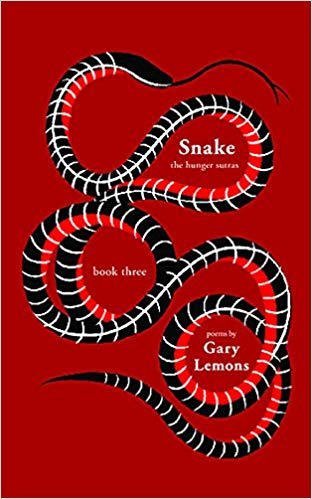
JC: Your forthcoming book of poetry, Snake III: The Hunger Sutras, is the third book in the Snake Quartet, and continues the journey of Snake, who is the sole survivor of the “cleanse” that wiped the Earth nearly clean. What was the inspiration behind this book, and the entire Snake Quartet? Was there a certain image, or moment, that sparked inspiration?
GL: The original voice of snake appeared in my book Bristol Bay & Other Poems—Red Hen Press. That poem came from an actual dream and was a sort of an apocalyptic vision where the Earth get tired of hosting parasites and destroys all life on it by unleashing cataclysmic forces such as hurricanes and earthquakes and fire and floods (sound familiar?).
The dream kept coming back in more detail narrated by a strange voice. I wrote down what I was given—mostly late at night—sometimes all night—as the poem decloaked. This turned into the first book in the Snake Quartet.
The last living thing—and there will always be one last thing before there is no thing—discovers the dreaming way even as it was being killed—the path out of form back into cosmic consciousness if you will where life goes during times of destruction and where spirits reside once their bodies are gone. The Buddhists call this Pralaja, or when the manifest universe returns to non-existence. So just as Earth was finishing this last living thing—rolling it and pulling limbs off it (making it snake shaped)—it popped out of view. It dreamed itself into a safe place. Taking the collectively destroyed plant and animal world with it. But not just living energies but their dreams and superstitions and mythologies and intuitions and fantasies and lies and grievances and essentially housing the entire kit and caboodle that once existed on Earth. Snake was born.
But only for a while. Because it was still alive it could not reside permanently in the dream world—it had to return to its body—now snake-shaped—at which point Earth came for it again. Around and around for thousands—then millions of year until Earth grew tired and slept—which was and is her natural state until activities on the surface disturb her. Now snake is alone on the the empty planet—wandering through artifacts and remnants—phantoms and ruins carrying the missing life forms inside of her. She is now the repository for what is gone.
This came out of a dream. A long sequential story pretty much as I just described poorly filled with horror and beauty and sorrow and moments of deep grace that together turned into a—oh why not just use the word—channeled experiences something like what I understand people to mean when they use the term automatic writing. I didn’t edit or censor it until the first book was finished. Then I went back through it with a very small pen making very light strokes so as not to disturb the force of what I consider a gift. The ensuing three books came from the same source through a similar process. Essentially I am occupied.
I felt the entire time and still do as the fourth book wobbles toward the finish line that I was being presented with a new way of looking at an ancient—perhaps inceptional mythology that was born at the exact moment the universe came into being. The end of a thing held inside the creation of it. It is a frightening thing to write from this place but ultimately it feels in phase with my life’s work as a poet.
JC: Why did you choose to tell this story through the narrative of a snake, rather than a man? What did it add to the story? What were some of the challenges of this approach, and how did you work through them?
As mentioned above I really didn’t decide. The vision if you will came uninvited and fully materialized into my dreams and imposed its weight in such a manner that the poems were made to pack it into view.
And to be clear—snake is not a man nor is she a woman exclusively. She’s both. He and she are the composites of all and the all—so I’ve been told by snake—is genderless. How could it not be. Gender is a point in time whereas forever or eternity or better—infinity—is timeless. Snake would say something like we are infinite consciousness momentarily expressed in specific forms obsessing over temporary identities rather than our true nature—which is formless. So snake will speak from the perspective of a man or a woman and sometimes both in the same poem. I can’t do anything about this. If you think it’s confusing you should talk to W. Nick Hill, who is attempting the Herculean effort of translating some of this work into Spanish, which is very precise about pronouns.
The challenges were largely two-fold. The first one was to endure the sorrow the poems instilled as I wrote them. Sure all I had to do was look at the headlines every day to confirm something catastrophic is moving our way—but still—that was no consolation for the real pain some of the poems evoked. Secondly I needed to stay out of the way of the poems as I wrote them. Which I realize is a strange confession but part of learning to write these poems in a new voice was to learn new skills as a writer and this was the most important one. To let be.
The voice of snake was originally spoken/written in a southernish dialect similar to the ones I heard around me growing up in Virginia and D.C. That was hard—to phonetically get the words right required lots of misspellings which the computer didn’t like at all.
After the fact, I sort of got what was going on with snake by seeing her aspects in other mythologies. The Garden of Eden—the Ouroborus—the Damaballah—Onjare—there are endless stories and gods and goddesses related to or created out of snake energy. I didn’t understand this as I was writing the books—which is a good thing—but I later came to understand that our societal and cultural myths and superstitions likely share a single source—fear. And in the non-dualist tradition this is balanced equally through action and service and sacrifice by courage and the dynamic interaction between these two giants eventually turns into love.
JC: The two themes that are introduced in Snake II and continue throughout the rest of the Quartet include appetite and history, or “the consumption of things at the expense of things” and “the idea that thoughts, imaginings, made objects, past events, inert forms, mythical narratives, rumors, and beliefs have an actual life and that our history is always incomplete if it doesn’t recognize these are real.” What is the intersection between these two themes, and how did you instill them into your poems?
GL: At the beginning of the Hunger Sutras you’ll find Patanjali’s Sutra 31 offered as a mantra repeated over and over again to diminish or even end the urges or appetites of the flesh. It’s what I call the Hunger Sutra.
We have the first book—Snake—describing events and their causes at the final moments of life on Earth. Armageddon unleashed—the End Game in which all the pieces are swept from the board—the last of things shouting and crying out grief and pain into the poems snake carries through the dream world into these books.
The Hunger Sutras asks the question—why is this chaotic and destructive influence happening whenever and wherever life is found? Why are families separated at borders—why is there ongoing war with increasingly more deadly weapons resulting in truly horrifying loss of life—why are diseases mutating and resistant to best science—why such inequity between those at the top and those at the bottom—what systems are in place acting as a garrotte around the neck of the planet—why are rivers burning and coral reefs dissolving and the oceans so choked with plastic and sewage the creatures there have no place left to live—why famine on a national scale—drought on a global scale—fires burning entire cities and those in charge walking around behind a little white ball with cigars in their mouths?
Snake begins with the premise that injustices and cruelties—wars and violence—all maladies and most illnesses are caused by hunger. The need to eat to survive. And what do we eat—other living things. We satisfy our hunger by killing something else that also wants to live. And for those of us evolved enough not to kill animals we still kill plants as if they are not sentient entities equally alive and present in their bodies.
Snake is sure that all things—from cancer cells to lichen on a rock to the Kings and Queens of State to the antelope and sponges and elephants and egrets and tulip bulbs underground all winter—you get the picture—all things are driven by the same imperative—they must eat to live.
So the question becomes: How do we find—as a world—any level of grace and non-violence when the seminal urge of life is a violent one—is essentially a murderous one that requires the death of one thing to continue the life of another?
There’s no answer to this—that’s what I’ve discovered in the writing of the Quartet. I thought at first the fourth book—Original Grace—might provide an alternate reality in which things lived as, say, minerals live. I thought a solution would appear. But it didn’t because I’m convinced in this reality this is the underlying truth. If so the question then becomes not how do we fix it but how do we live in the space around it—how do we accept hunger as the necessary cornerstone of existence while at the same time learning to love and honor one another?
So this is what I meant earlier about poetry in my life being part of a spiritual practice if you will. I’m trying to answer these questions at a personal level—not just conceptually.
JC: Do you have any advice for becoming more attuned to nature and its poetic capabilities?
GL: Well I’m always giving myself advice but by the time I get around to offering it to anyone else I typically realize they probably know more than I do. I’m trying not to know stuff—I’m convinced that “knowing” is also a form of appetite and the best thing I can do is just feel and intuit my way through the darkness rather than construct well-lit rooms where theories based on current facts turn to nonsense. Today’s science is tomorrow’s voodoo so to speak.
But for what it’s worth I believe in the medicinal value of silence. Less noise—more quiet moments. Feel the body you’ve been given—no matter your age or abilities—feel the life force coursing through the flesh of you—soon it will become apparent it’s the same life force in others—in trees and chickens and polar bears and strangers and children and enemies. We are connected by the essential truth that we’re alive and the best way for me to understand this is by finding a place to simply breathe in silent council with a tree or a mountain or a friend. To attempt in my poor way to illuminate the threads that at the end of the day connect us to one another.
I also understand this seems impossible for some. It’s seemed impossible to me. If you’re in a war zone—if you’re homeless—if you’re working for minimum wage or less and can’t pay bills or feed children—if you’re sick or elderly or displaced or pursued it is difficult and apparent fantasy to believe in a place of grace or rest.
My yoga teacher—Erich Schiffmann—says something like—if even for an instant we can stop energizing the old beliefs there might come an inkling of another way. And the practice of doing this whenever it occurs to you every day over time will start to dissipate the fog that keeps the actual true nature of things unclear. But again—when hunger is the driving force behind existence it takes an amazing amount of desperation and/or character and/or practice to trust into the goodness of the totality and believe that what is happening right now is not big picture real and not the truth but a lie fueled by consensual turning away.
JC: What’s next for you?
GL: I’m working on the final edits for the fourth book in the Quartet—Original Grace which will publish with Red Hen in the spring of 2020. Another book—The Book of Spells—is finished and scheduled for a spring 2022 launch. I have three other books—Collateral Joy, The Undertaker’s Mute and Dark Sky Preserve finished and I’m not sure what to do with them. There are numerous other books in progress.
I should pay homage to Red Hen Press and particularly Kate Gale and Mark Cull and Tobi Harper. Red Hen takes chances by publishing outside mainstream literature and is a fantastic force for change not just in the literary world but in the schools and sub-cultures of Los Angeles and the greater world. Even if I had no relationship with them I’d admire them. I am constantly amazed at the professional support I receive from them both as a poet and as a person.
My wife who is German and I are going to Germany this fall to seriously take a look at the possibility of living there. For lots of reasons. Otherwise, I walk our little dog, tend the gardens—hang with my friends, practice yoga and enjoy the gift of having the beautiful and truly amazing Nöle Giulini as my partner on this wave. Oh yeah—and write four hours every day as Donald Justice once advised.
**
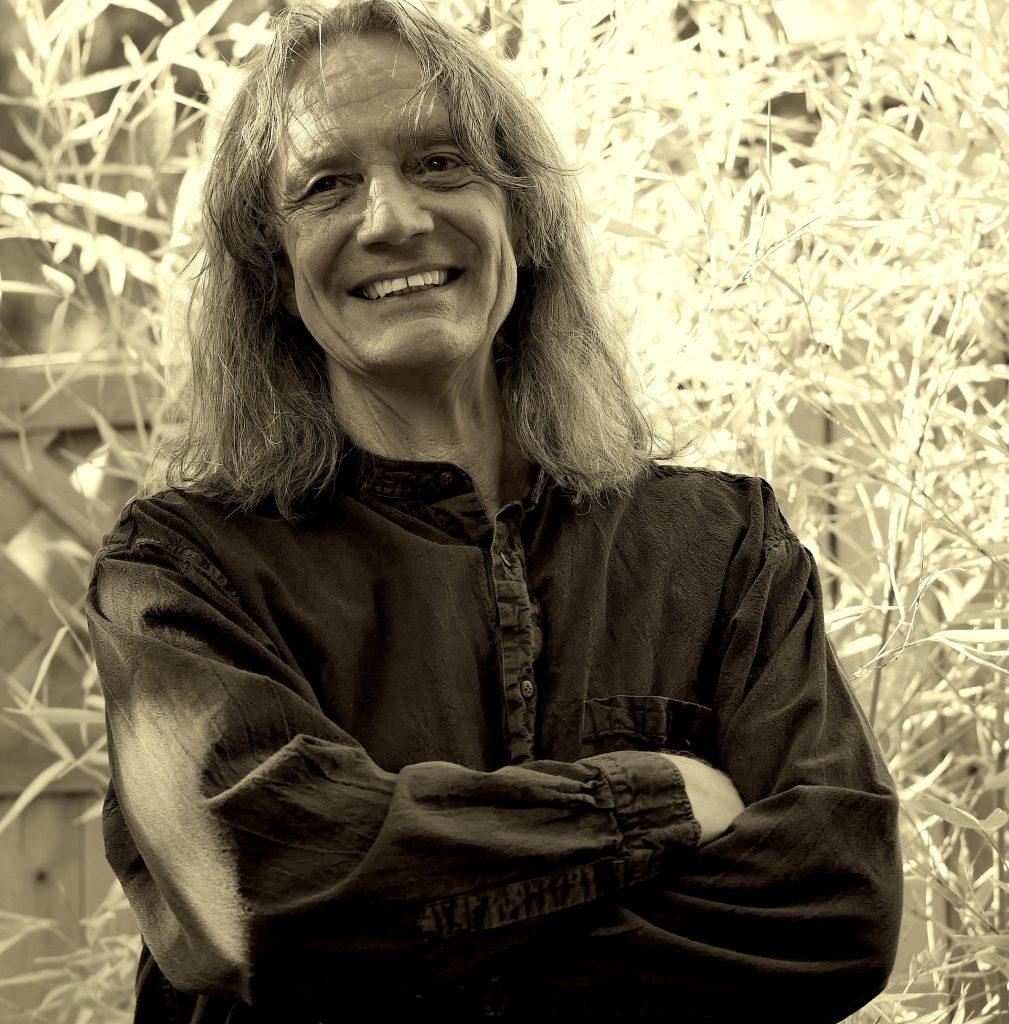 Gary Lemons received an undergraduate degree in poetry from the University of Iowa in 1973 and then spent the next five years living in small towns throughout the Midwest—mostly in Iowa—building grain elevators and feed mills. He fished for many years in Alaskan waters from Nome to Dutch Harbor but mostly in Bristol Bay (Bristol Bay & Other Poems—Red Hen Press) and later worked as a tree planter re-foresting clear-cuts all over the Pacific Northwest. He has seven books of poetry in print with two more scheduled. He is a yogi and currently teaches gentle yoga with his wife at their studio—Tenderpaws—in Port Townsend, Washington.
Gary Lemons received an undergraduate degree in poetry from the University of Iowa in 1973 and then spent the next five years living in small towns throughout the Midwest—mostly in Iowa—building grain elevators and feed mills. He fished for many years in Alaskan waters from Nome to Dutch Harbor but mostly in Bristol Bay (Bristol Bay & Other Poems—Red Hen Press) and later worked as a tree planter re-foresting clear-cuts all over the Pacific Northwest. He has seven books of poetry in print with two more scheduled. He is a yogi and currently teaches gentle yoga with his wife at their studio—Tenderpaws—in Port Townsend, Washington.
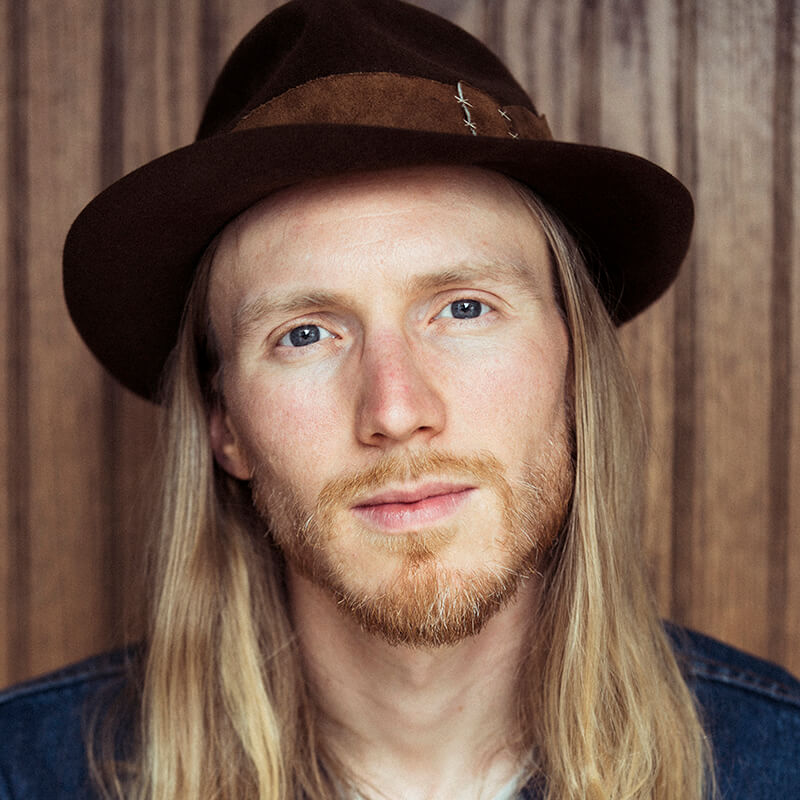 Kai Carlson-Wee’s piece “Splitting a Forty With Ant B” appears in Midwestern Gothic‘s Summer 2018 issue, out now.
Kai Carlson-Wee’s piece “Splitting a Forty With Ant B” appears in Midwestern Gothic‘s Summer 2018 issue, out now.

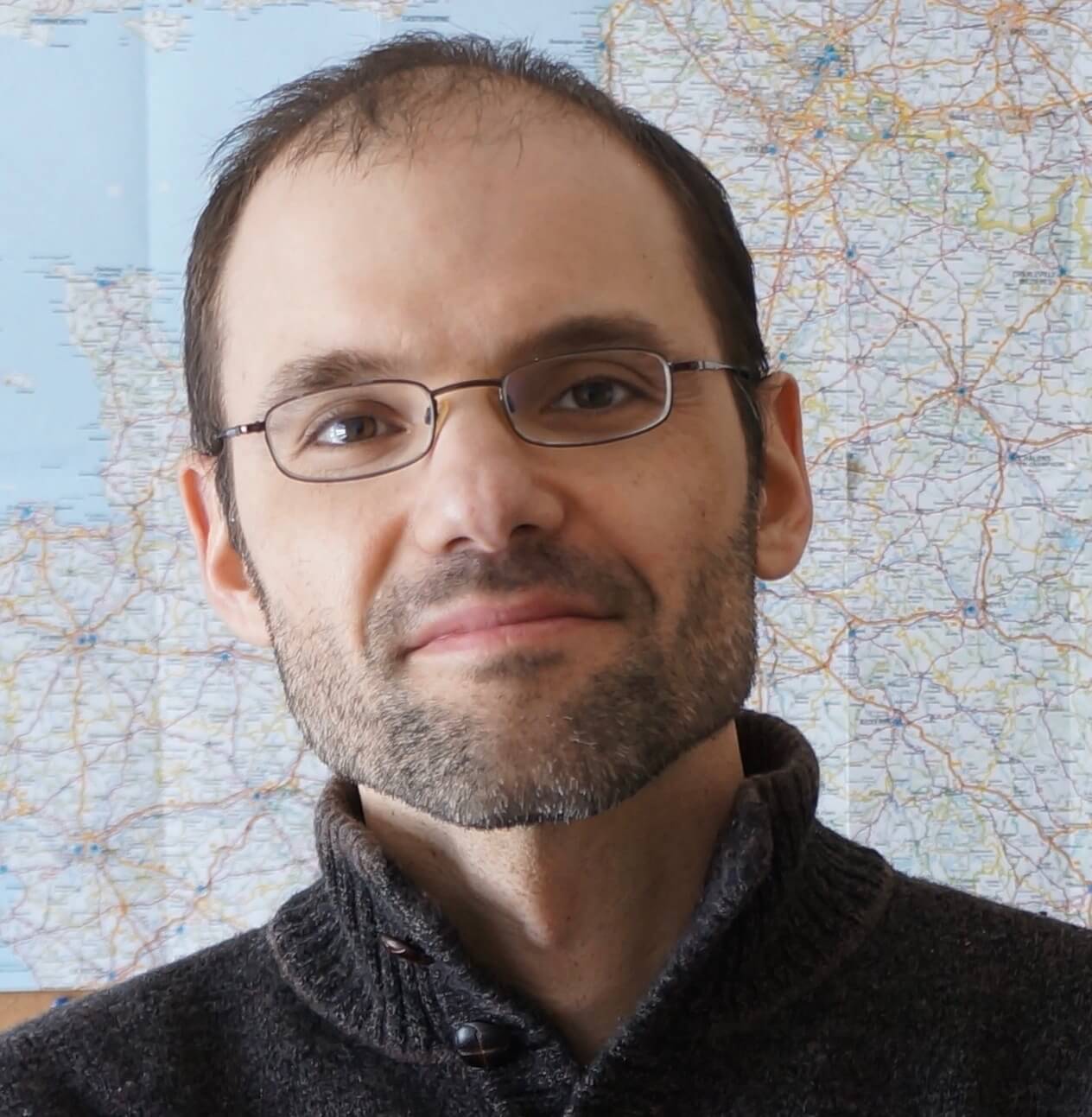 Scott Onak’s story “L3 Loves Hudson” appears in
Scott Onak’s story “L3 Loves Hudson” appears in 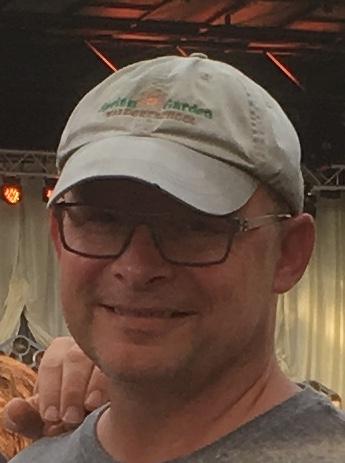 Midwestern Gothic staffer Marisa Frey talked with author Joe Kapitan about his collection Caves of the Rust Belt, how to link the fantastical and the real, what “caves” are to him, & more.
Midwestern Gothic staffer Marisa Frey talked with author Joe Kapitan about his collection Caves of the Rust Belt, how to link the fantastical and the real, what “caves” are to him, & more.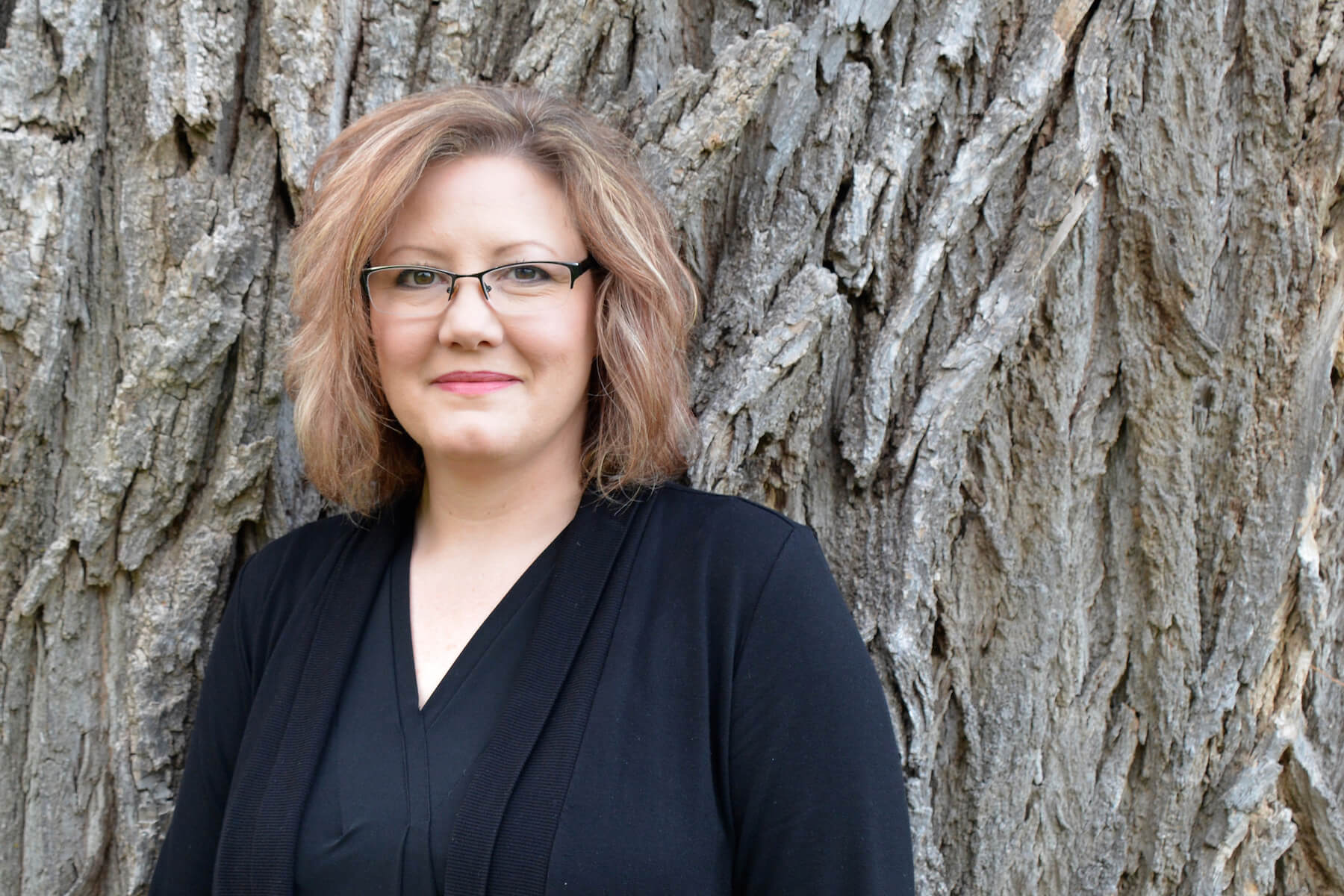 Jen Ippensen’s piece “Centennial Seamstress” appears in
Jen Ippensen’s piece “Centennial Seamstress” appears in 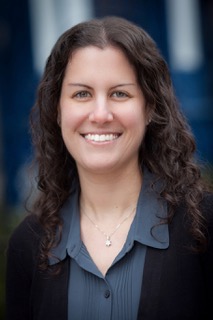 Midwestern Gothic staffer Jo Chang talked with author Jamie Wendt about her poetry collection Fruit of the Earth, the significance of religion in her work, being an English teacher, and more.
Midwestern Gothic staffer Jo Chang talked with author Jamie Wendt about her poetry collection Fruit of the Earth, the significance of religion in her work, being an English teacher, and more.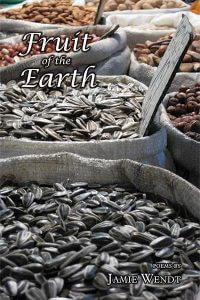
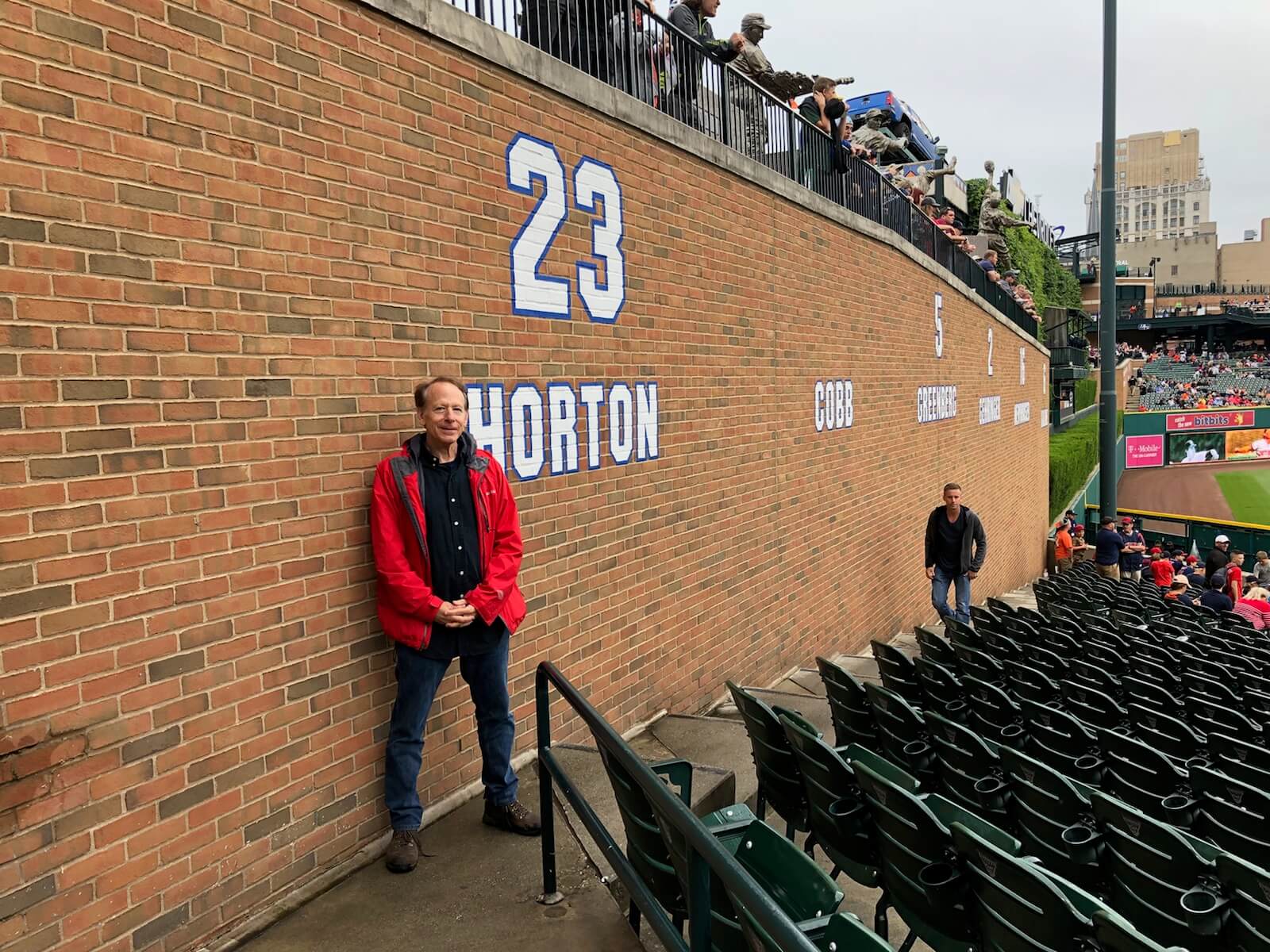 Laurence Levy’s story “The Rules of Time Travel” appears in
Laurence Levy’s story “The Rules of Time Travel” appears in 
 Gary Lemons received an undergraduate degree in poetry from the University of Iowa in 1973 and then spent the next five years living in small towns throughout the Midwest—mostly in Iowa—building grain elevators and feed mills. He fished for many years in Alaskan waters from Nome to Dutch Harbor but mostly in Bristol Bay (Bristol Bay & Other Poems—Red Hen Press) and later worked as a tree planter re-foresting clear-cuts all over the Pacific Northwest. He has seven books of poetry in print with two more scheduled. He is a yogi and currently teaches gentle yoga with his wife at their studio—Tenderpaws—in Port Townsend, Washington.
Gary Lemons received an undergraduate degree in poetry from the University of Iowa in 1973 and then spent the next five years living in small towns throughout the Midwest—mostly in Iowa—building grain elevators and feed mills. He fished for many years in Alaskan waters from Nome to Dutch Harbor but mostly in Bristol Bay (Bristol Bay & Other Poems—Red Hen Press) and later worked as a tree planter re-foresting clear-cuts all over the Pacific Northwest. He has seven books of poetry in print with two more scheduled. He is a yogi and currently teaches gentle yoga with his wife at their studio—Tenderpaws—in Port Townsend, Washington.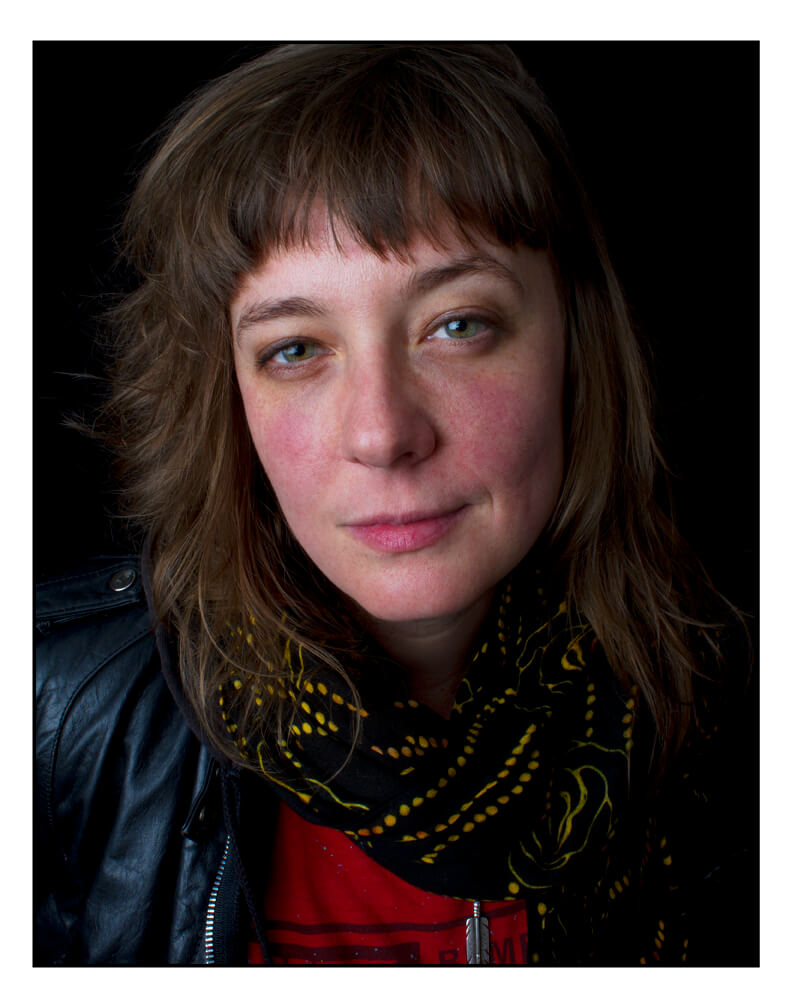 Joliange Wright’s piece “The Mother Church” appears in
Joliange Wright’s piece “The Mother Church” appears in 



